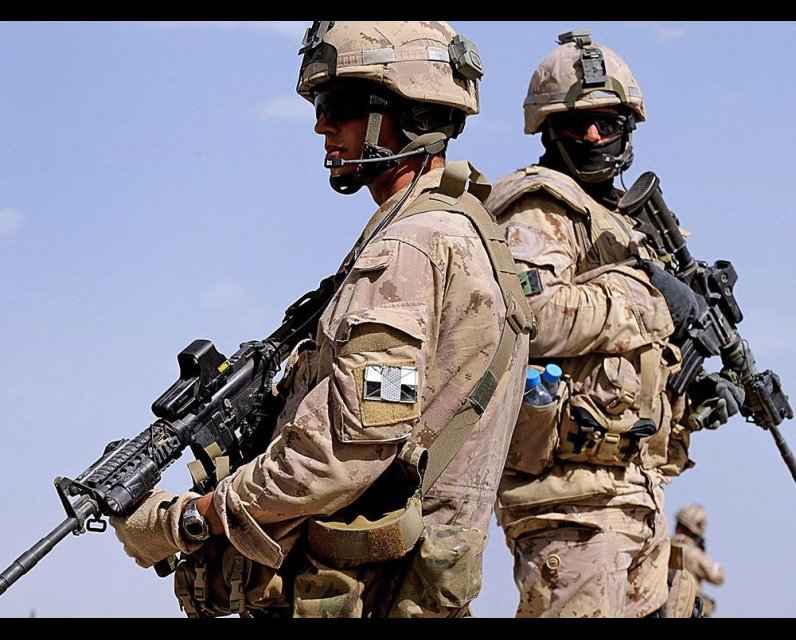Source Feed: National Post
Author: Tyler Dawson
Publication Date: June 9, 2025 - 17:22
The long history of Canada failing to hit its military spending targets
June 9, 2025

In an ever-more insecure world, Canada’s federal government has announced it will
spend two per cent of its GDP
on military spending. That’s the standard that members of the North Atlantic Treaty Organization all agreed to back in 2006, but Canada has long been a laggard, to the extent that other governments, particularly the United States, have browbeaten the country for its meagre military spending.
At present, Canada spends 1.37 per cent of GDP on the military.
In 2024, NATO released a report detailing which nations hit the two-per-cent target. Twenty-three of the defence’s group’s members were either at or above two per cent. This includes Montenegro, a Balkan country with a population smaller than that of Mississauga, and the two most recent NATO members, Sweden and Finland.
Eight countries, including Canada, had not. Canada spends less than Italy on defence but more than Belgium. The lowest-spending NATO nation, Spain, puts 1.28 per cent of its GDP towards military spending. In July 2023, the Wall Street Journal editorial board called Canada’s
military spending “pathetic
.”
NATO is currently considering bumping its threshold from two per cent to five per cent, something that world leaders are expected to discuss at the annual summit at The Hague in two weeks’ time.
Peter MacKay, who served as defence minister in the former Conservative government,
told National Post
in 2023 that he regrets that the Conservatives hadn’t hit the target while they were in power.
By 2014, he said, there was a “great deal of fatigue around defence spending,” due to the years Canada had spent fighting in Afghanistan.
“We, the (Stephen) Harper government, were putting a lot of money into this effort to reach two per cent. And the department literally couldn’t spend it fast enough,” he said. “They would take the money and we would get wrapped around the axle literally on these big (procurement) projects. And we would, at the end of the year, have to send money back to the Treasury.”
Prime Minister Mark Carney announced Monday that Canada will spend an additional $9.3 billion on defence during the 2025-2026 fiscal year, for a total of more than $62 billion, or about two per cent of GDP.
But this isn’t the first time that a Canadian prime minister has promised that the country would hit the target. Here’s a non-exhaustive list of when Canada has promised to hit its NATO target and where its defence spending was at over the years.
1970s:
At this point, Canada was spending
2.8 per cent of its GDP on its defence budget
. While the 1970s were technically a period of détente in the Cold War, there were a number of close calls in the 1960s and the 1970s were a deeply unstable period. Throughout the mid-1970s, Canada’s military spending began to decline, averaging about 1.9 per cent of GDP, before growing slightly through the 1980s to 2.1 per cent.
April 1989:
In the 1989 budget, Canada planned to cut $2.7 billion from its defence budget and close 14 of its Cold War bases. An entire military program, nearly $700 million for an icebreaker, was scrapped.
November 2006:
NATO member countries commit to two per cent of GDP going towards the military. At the time, Canada’s defence spending was around 1.2 per cent of GDP.
January 2007:
During the war in Afghanistan, Stephen Harper’s government was spending just over one per cent of GDP. In January 2007, the Defence Department presented Harper’s cabinet with three spending options to grow the defence budget. The middle option was to spend $35 billion by 2025. As of 2025, defence spending
was a bit above $30 billion
.
September 2014:
At the NATO summit in Wales, allies reaffirmed their commitment to spending two per cent of GDP on military spending. However, just days before the meeting, figures released by the Department of National Defence showed that the federal government
intended to shrink defence spending
by $2.7 billion. (The government was pushing to balance the budget in advance of the 2015 election. Liberal Leader Justin Trudeau won a majority government in that election.)
June 2017:
Then defence minister
Harjit Sajjan announced an increase of $13.9 billion
in military spending over the next decade, and a plan that would put 5,000 more troops in uniform, but still leave Canada short of hitting the two per cent target. At the time, defence spending was at around 1.19 per cent of GDP.
October 2020:
Canada’s defence spending jumped to 1.45 per cent of GDP. However, that was not because of any new spending increases, but because the economy contracted during the COVID-19 pandemic.
May 2022:
Then defence minister Anita Anand said that Canada is on an “
upward trajectory
” when it comes to meeting NATO targets. However, in a virtual discussion hosted by the Canadian Chamber of Commerce, she stopped short of committing to a timeline.
June 2022:
The Parliamentary Budget Office said that if Canada was to reach the two-per-cent target by 2027, the country would need to spend more than
$75 billion more over five years
.
April 2023:
A leaked Pentagon assessment obtained by the
Washington Post revealed
that Trudeau had privately told NATO officials that Canada would never reach the alliance’s defence-spending target of two per cent of GDP.
July 2023:
NATO released a statement saying that all members have agreed to spend at least two per cent. Canada agreed to the target, but at the time had no plan to reach it.
In recent years, officials have defended the government’s failure to meet the two per cent target, saying that
Canada has increased
its military spending by 70 per cent since 2014. The Liberals announced $2.6 billion over three years on Canada’s mission in Latvia, $40 billion on NORAD modernization and billions in spending on the new F-35 fighter jets (a contract that is now being reviewed.)
April 2024:
The Canadian government
unveiled its updated military policy
— Our North, Strong and Free — which included $8.1 billion in further spending. However, it was not a commitment to reach two per cent. It would get Canada to 1.76 per cent by 2029-30.
June 2024:
Then prime minister Justin Trudeau
announced at the end of the 2024 NATO summit
that Canada would reach two per cent of GDP on military spending by 2032.
“We continually step up and punch above our weight, something that isn’t always reflected in the crass mathematical calculation that certain people turn to very quickly,” Trudeau said at the time. “Which is why we’ve always questioned the two per cent as the be-all, end-all of evaluating contributions to NATO.”
In July, Blair said:
“It was important to be realistic about how long it was going to take to make these investments, to do it the right way.”
November 2024:
Exclusive Postmedia-Leger polling showed that
45 per cent of Canadians
don’t believe that Canada will hit its commitments on military spending. In order to achieve that, Canada would need to nearly double defence spending. Just one-fifth of Canadians told pollsters they think it’s possible.
January 2025:
Then minister of national defence Bill Blair said that Canada could
accelerate its timeline of hitting
the two per cent target. Instead of 2032, Blair said that Canada could hit that benchmark by 2027 by simply accelerating the timeline set out in June 2024.
April 2025:
During the federal election, both the
Liberals and the Conservatives
promised to meet the NATO spending targets. The Liberals said they would do so by boosting spending by $18 billion over four years, while the Conservatives pledged to spend $17 billion over four years. In March, U.S. President Donald Trump said that the
United States wouldn’t defend NATO allies
that had not met their spending targets.
Our website is the place for the latest breaking news, exclusive scoops, longreads and provocative commentary. Please bookmark nationalpost.com and sign up for our daily newsletter, Posted, here.
With the Oilers in the Stanley Cup final again this year, the decision to bring back "Connor McDavid Square" in the hometown of Edmonton's star forward was a no-brainer for Newmarket Mayor John Taylor.
June 9, 2025 - 22:24 | Globalnews Digital | Global News - Ottawa
Joy Fiddler sat outside a hotel smoking a cigarette, as her daughter, Saffron, registered their family of nine with the Canadian Red Cross. Fleeing from an out-of-control wildfire near her Northern Ontario home in Sandy Lake First Nation, she had slept for less than an hour after arriving more than 1,500 kilometres away in Cornwall.“All I saw was orange,” Ms. Fiddler, 51, said Monday afternoon, recalling her 11-hour wait at the Sandy Lake airport, where military aircraft and helicopters have been landing since Saturday, struggling to airlift nearly 3,000 people amid heavy smoke.
June 9, 2025 - 22:03 | Temur Durrani, Willow Fiddler, Laura Stone | The Globe and Mail
A 0.5-hectare wildfire is burning out of control in Squamish, B.C., just above some homes in the Northridge area. The BC Wildfire Centre expects the fire to spread.
June 9, 2025 - 21:05 | Lasia Kretzel | Global News - Canada



Comments
Be the first to comment